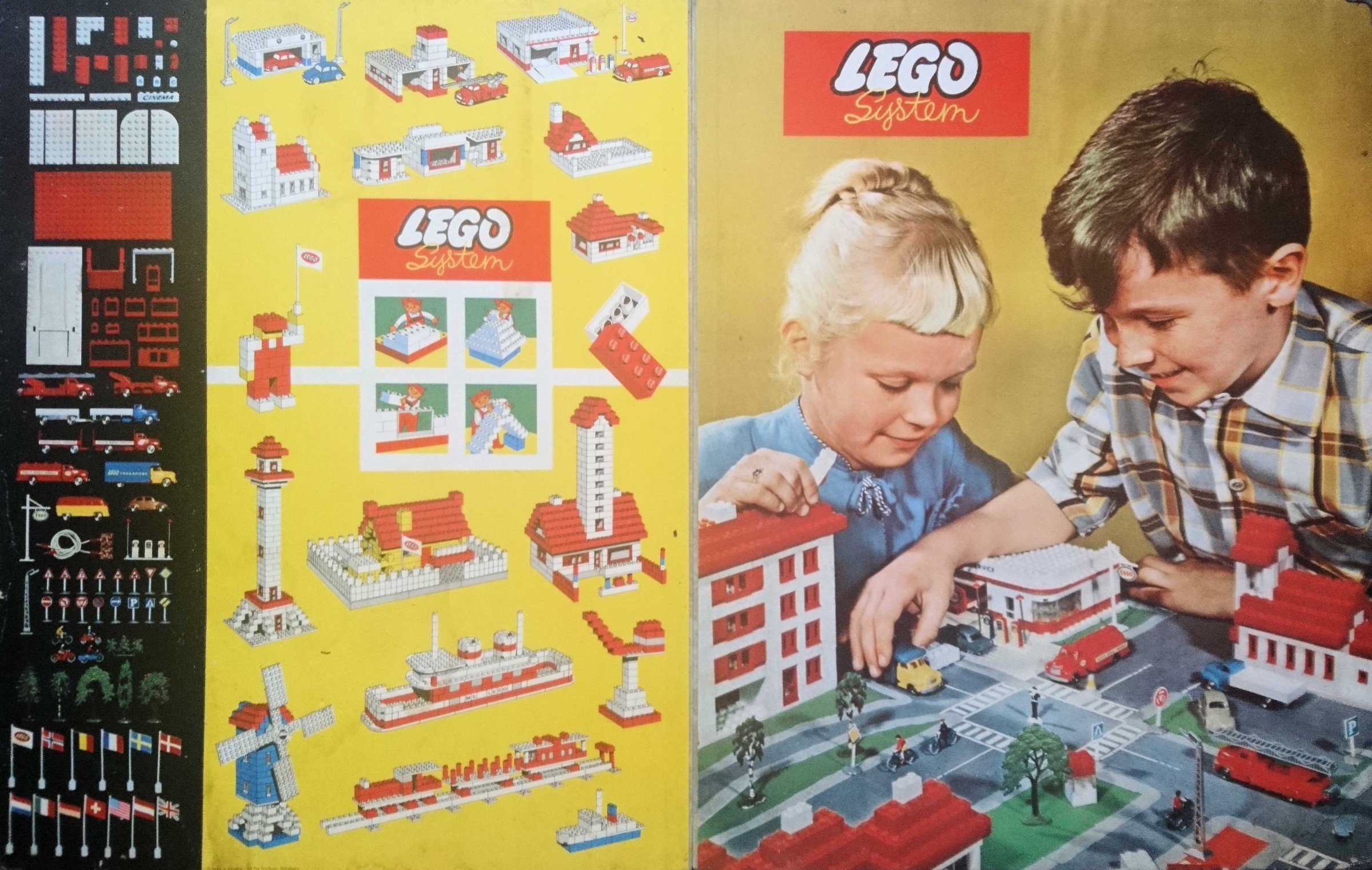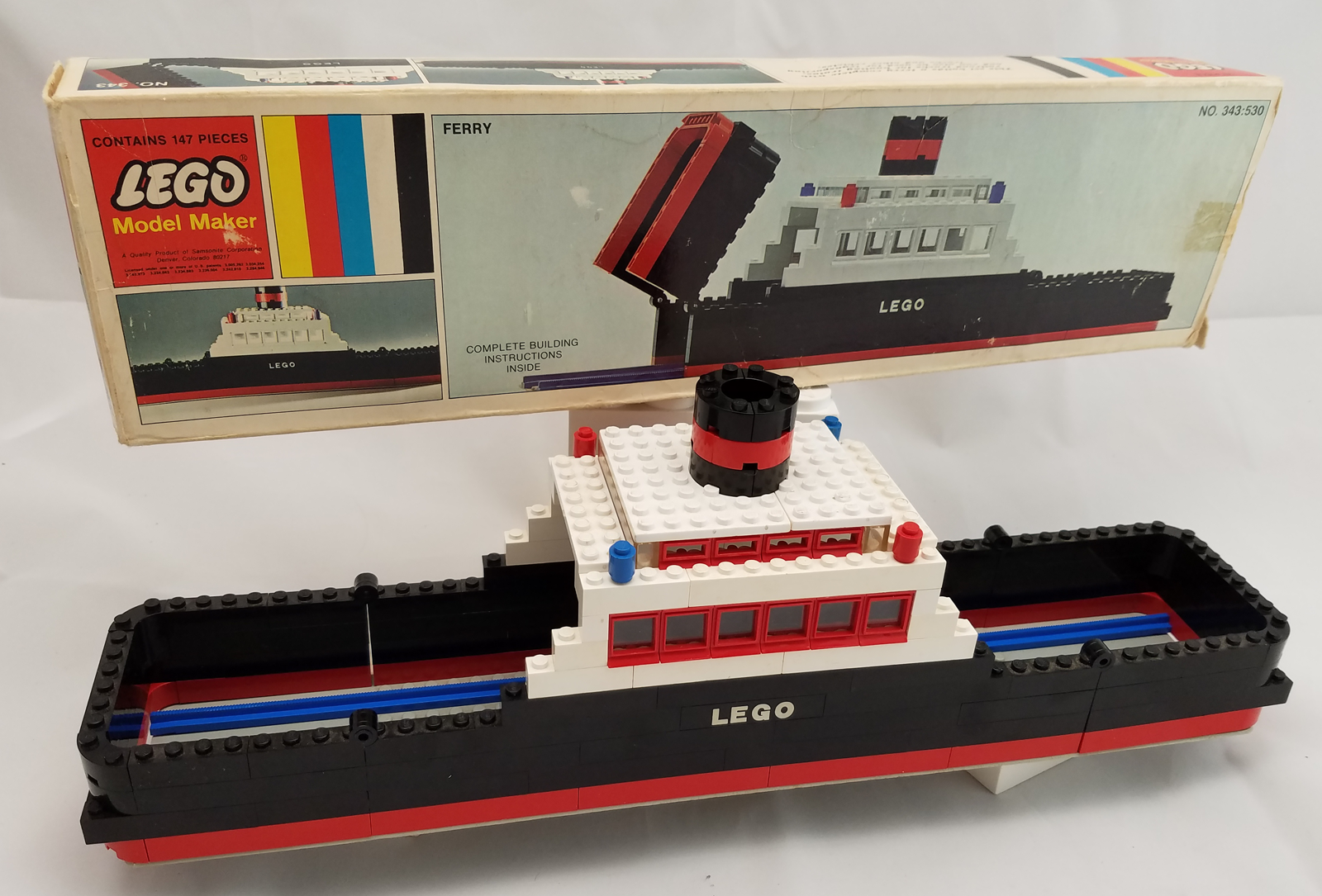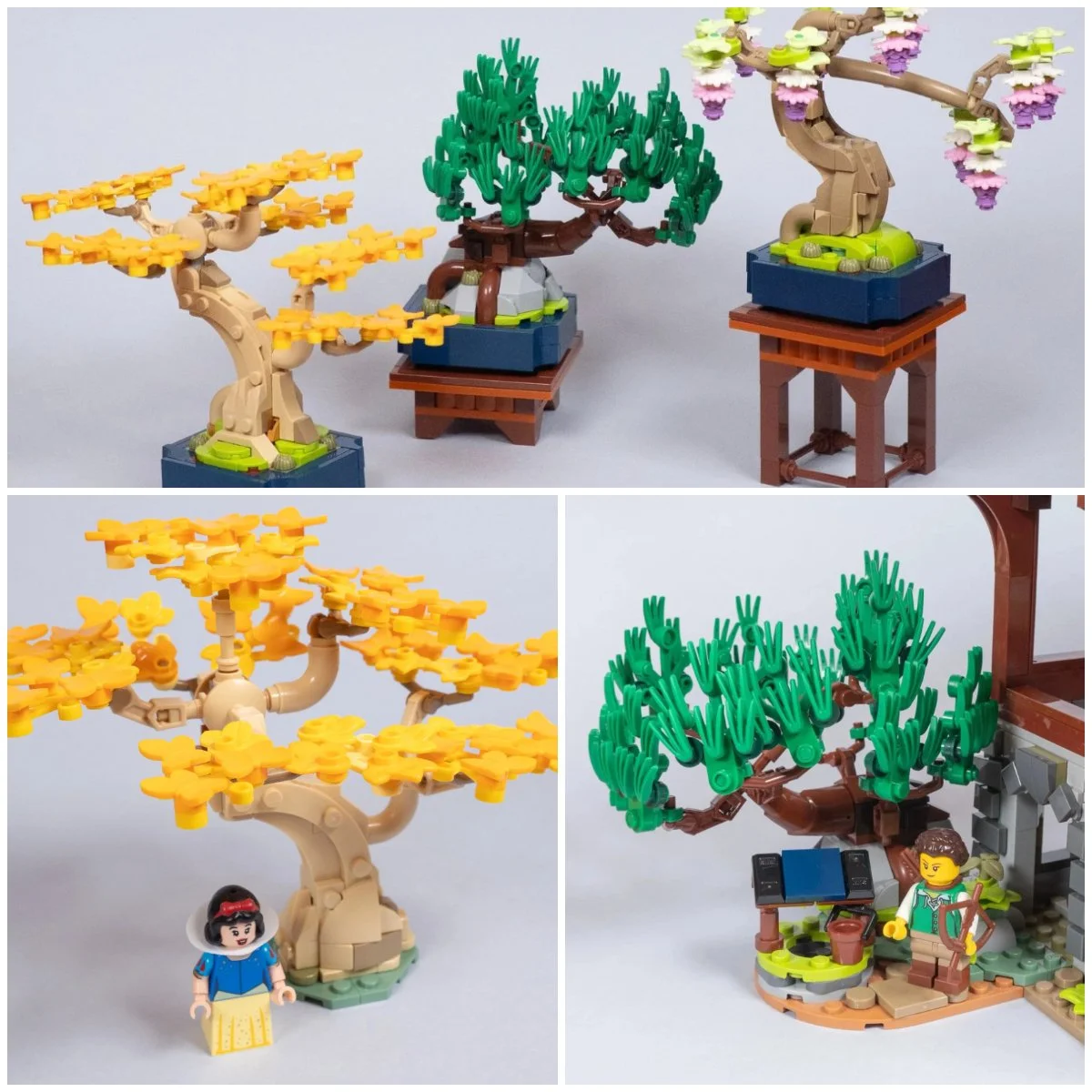Everything You Want to Know About LEGO Model Ships
/Best of BrickNerd - Article originally published July 11, 2022.
To celebrate BrickNerd’s pirate contest from last year, I wanted to look at the many sets that LEGO has produced over the years that contain ships or boats. The early days of the LEGO System focused more on the Town Plan theme, so ships were rare in those days. But as early as 1959, the box of Town Plan set 200 shows building suggestions that could be two ships. In 1968, LEGO released the first set with a ship as its main model: 343 Ferry. Minifigures weren't around yet in 1968, but this set was certainly “minifigure scale”.
Minifigure-sized ships have since appeared in many themes like City, Pirates and Vikings, but you might be surprised to find ships and boats in other themes such as Adventurers, Indiana Jones and Vidiyo.
However in this article I want to talk about “Model Ships”. In other words, LEGO sets with ships that are not populated by minifigures but are instead scale models of real ships. The most recent and famous example of a LEGO model ship is, of course, the massive 10294 Titanic set, but did you know there were many interesting sets before that?
Ferries
Let's go back to 1977. A boy called Kimmo lived in my street, and he was from Finland. His dad travelled a lot, and one day he returned with a LEGO set of a ship called Finnjet.
This looked like no other LEGO set I'd seen. I loved it and really wanted one for myself but it was only sold on board the ferry itself, and my family didn't travel to Helsinki in those days. Little did I know that Finnjet was the biggest and fastest ferry in the world at the time, and this set was the first in a long line of promotional sets of ferries.
At a scale of around 1:500, the scope for details is obviously limited but it's a faithful representation of the ship—especially considering the parts palette in 1977. In the same year, LEGO also released a promotional set for Silja Line Ferries, which ten years later ended up owning Finnjet.
Set 1580: Silja Line Ferry (1977)
These first two sets used transparent plates for windows. They are also the only two sets ever to feature 1x4 transparent plates. Later sets abandoned transparent elements and instead relied on printed bricks for the rows of windows. Between 1981 and 1999, LEGO produced another 13 promotional sets for various ferry lines, all of similar size and detail level. Unfortunately, the quasi-theme didn't end on a high note. The last two sets, both made for Stena Lines, focused more on play, and the models were much simpler.
Set 1054: Stena Line Ferry (1999)
After an 18-year gap, set 40227 was released in 2017 (and re-released two years later as 40318) as a promotional item for MSC Cruises. Despite a similar parts count, this model is smaller than the previous ferries at only 4-studs wide and is covered in stickers for details (as is normal nowadays).
Set 40227: MSC Meraviglia (2016)
Floating Ships
While I consider the Finnjet LEGO's first true model ship, we can go further back in time to 1973 for some more non-minifig ships. In that year, LEGO released a number of sets with hull pieces that allowed them to actually float on water. They had a weighted keel to keep them upright and you could attach a small AA-battery powered motor with a propellor to the keel. I sure had a lot of fun with Cargo Ship set 312 running around me in the bathtub as a kid.
There were two more sets in the first wave, a Ferry (311) and a Tugboat (310). That last one almost looks like a minifig ship but remember we're only in 1973. Nobody knew what a minifigure was yet. While these ships were not modelled after a particular prototype, they do look realistic. The same year three more floating ships were released under the Minitalia brand, but they look simplistic compared to 311 and 312.
Set 1650: Maersk Line Container Ship (1974)
1974 saw the start of a long-standing and popular collaboration in the form of 1650 Maersk Line Container Ship. At seven hull sections, this was the longest of the floating hull ships. In 1976 there was a generic container ship and 1978 brought a fire fighter ship, but sadly that's where the story ends for the realistic ships in this series. 1976 also saw the release of a police boat with a crew of two 'stiffies' (not quite minifigures with no poseable arms or legs), and with that, the writing was on the wall. The idea of floating ships continues to this day with a new hull design every few years, but all of the sets feature minifigures.
The Real Thing
In 1978, LEGO released its first big ship model—the legendary USS Constellation.
Containing nearly 1,000 parts, this was the largest (non-basic/educational) set of its time. It would hold this record until 1990 when a Model Team set finally broke the 1000-piece barrier. But it wasn't just the sheer number of pieces that makes this a unique set. The year before saw the launch of the 'Expert Builder' theme, now better known as Technic. The USS Constellation makes creative use of some of the new parts from this emerging theme. It uses three different SNOT techniques, several tricks that are definitely illegal now like holding a string between two plates, and it is the only set to contain wheel holder plates without their metal axles.
All these parts and techniques are put to good use. I'm looking at my own copy of the (bought on eBay a few years ago, proudly sitting on the mantelpiece) and it still looks impressive. (Being the numberphile I am, I do wonder why this set wasn't released in 1979 given that the original USS Constellation was launched in 1797...)
Set 10021: USS Constellation (2003)
In the early 2000s, LEGO was getting a lot of requests from fans to rerelease classic sets. They tried it with the short-lived “Legends” theme, and the USS Constellation was one of the sets that were chosen. However in the 24 years since the release of the original, the available parts palette had changed. Most importantly, the 1x1 window was discontinued so in the Legends version these windows were replaced with backwards headlight bricks backwards. (Fans were not impressed... as they are sometimes want to be.)
In the years between the release and rerelease of USS Constellation, only one noteworthy ship set was released—and it won't surprise you that it was in the Model Team theme. In many ways, Model Team was the successor to the Hobby Sets theme that the original USS Constellation was part of. Most of the theme is car-based but there was one ship set, the 5521 Sea Jet.
Shortly after Constellation's rerelease, the model ships came back back with a bang when LEGO released set 10152 Maersk Sealand Container Ship in 2004.
30 years after the first Maersk ship mentioned above, the “special blue” partnership returned to LEGO ships. The set was big, detailed and made with gorgeous colors like Maersk blue with dark red. This set was actually so popular that it was released again six years later. Between the two releases, there are a few small variations in shades of blue and sticker sheets that I won't get into now. The partnership continued to 2014 with the Maersk Line Triple-E, an even bigger container ship, both in real life and in the brick.
Set 21313: Ship in a Bottle (2018)
After the apparent end of the Maersk partnership, model ships went quiet again… until the totally original Ship in a Bottle made it through the LEGO Ideas review process and became the 20th Ideas set. For so many people, this is what model ships look like—tiny and inside a bottle.
And then LEGO went from one extreme to another with a set of Titanic proportions... (sorry, couldn't resist!). Set 10294 is the biggest ever, coming in at just over 9,000 pieces and measuring over four feet long. (It does not float.)
It's big, it's beautiful, it's detailed... it just makes you wonder what's next?
Honourable Mentions
While they're not scale models as such, the LEGO ships from the Pirates of the Caribbean theme are bigger and more detailed than most minifigure ships, as is set 10210 Imperial Flag Ship. Even Technic had a stab at a realistic-looking ship with 42064 in 2017 pictured below. While the submarine and helicopter are somewhat disproportionate, the ship itself is a decent representation of an exploration ship.
One more fun fact for the numberphiles. The first wave of floating ships had set numbers 310/311/312 and 314/315/316. For some reason, the middle number, 313, was inexplicably a model of a London Bus. 45 years later, the LEGO Ideas Ship in a Bottle was released as set 21313. As Detective Inspector Benny Griesel would say, I don't believe in coincidences.
LEGO has a long history of producing model ship sets, and hopefully that history will continue. To help keep track of all these ships, I created a Brickset Bricklist that includes all the sets mentioned in this article: Model Ship Sets. And until LEGO comes out with their next model ship, I look forward to seeing what you all build for our own nautical contest.
Which model ship is your favorite? Let us know in the comments below!
Do you want to help BrickNerd continue publishing articles like this one? Become a top patron like Charlie Stephens, Marc & Liz Puleo, Paige Mueller, Rob Klingberg from Brickstuff, John & Joshua Hanlon from Beyond the Brick, Megan Lum, Andy Price, John A., Lukas Kurth from StoneWars, Wayne Tyler, LeAnna Taylor, Monica Innis, and Dan Church to show your support, get early access, exclusive swag and more.






























